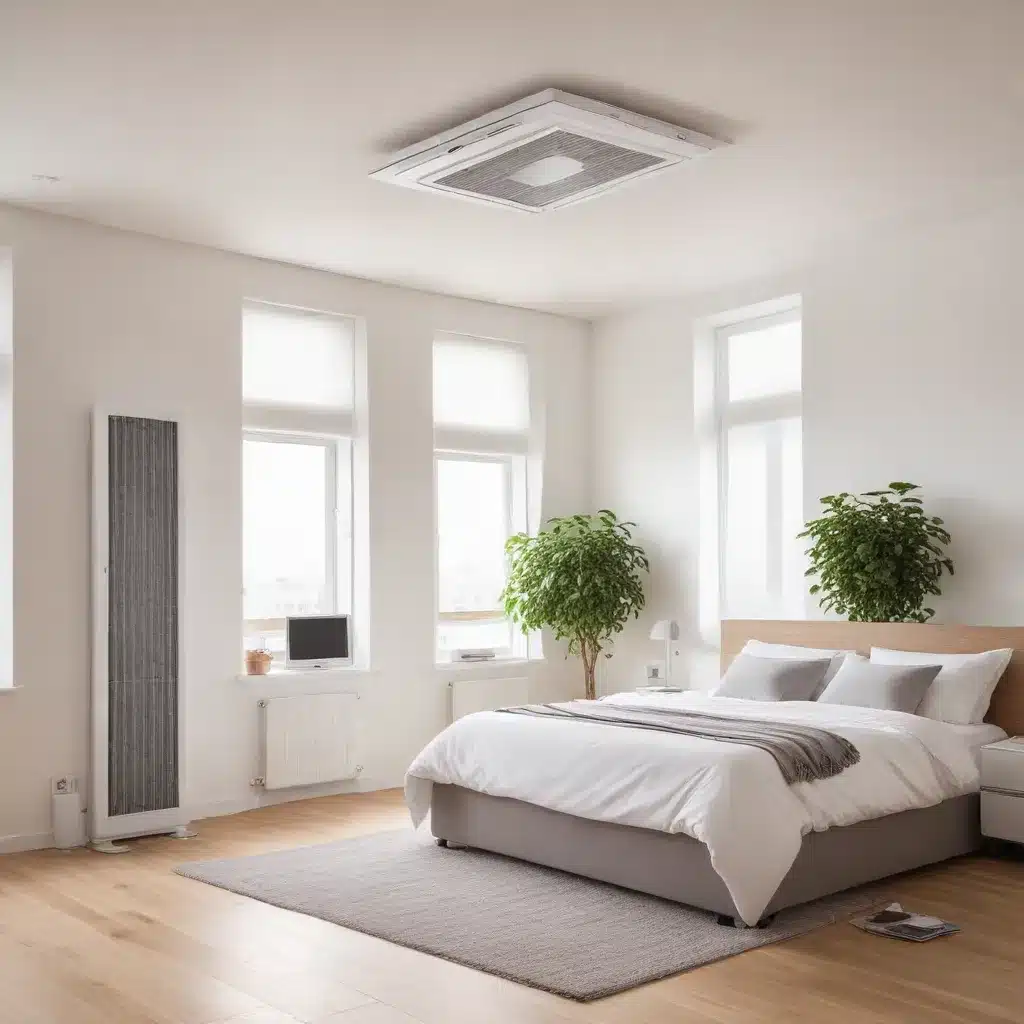
Harnessing Phase Change Materials for Energy-Efficient Cooling
In recent years, passive cooling systems have garnered significant attention as a sustainable and cost-effective alternative to traditional air conditioning. Among the various passive cooling techniques, Phase Change Material (PCM) cooling systems have emerged as a promising solution for regulating indoor temperatures and improving thermal comfort.
PCM cooling systems leverage materials that undergo a phase transition, such as solid-to-liquid or liquid-to-gas, to absorb and release large amounts of heat during the phase change process. This unique ability to store and release thermal energy makes PCM systems an attractive choice for energy-efficient cooling in both residential and commercial applications.
Principles of PCM Cooling Systems
The core principle behind PCM cooling systems is to utilize the latent heat of transformation to regulate indoor temperatures. When the PCM material absorbs heat, it undergoes a phase change, transitioning from a solid to a liquid state. This phase change occurs at a specific temperature, known as the melting point of the PCM.
During the melting process, the PCM can absorb large amounts of thermal energy without a significant increase in temperature. Conversely, when the PCM releases heat, it undergoes the reverse phase change, transitioning from liquid to solid, and releases the stored thermal energy.
By strategically selecting PCM materials with melting points aligned with the desired indoor temperature range, passive cooling systems can effectively moderate the indoor climate, reducing the reliance on energy-intensive air conditioning units.
Advantages of PCM Cooling Systems
Passive PCM cooling systems offer several key advantages over traditional cooling methods:
-
Energy Efficiency: PCM systems can significantly reduce energy consumption for cooling by leveraging the latent heat of phase change rather than relying solely on power-hungry refrigeration systems.
-
Thermal Comfort: By maintaining a consistent indoor temperature within the desired comfort range, PCM systems can enhance occupant satisfaction and well-being.
-
Reduced Operational Costs: The decreased energy usage of PCM cooling systems translates to lower operating costs for homeowners and building owners.
-
Sustainability: Passive PCM cooling systems contribute to a more sustainable built environment by minimizing the environmental impact associated with traditional air conditioning.
-
Versatility: PCM cooling can be integrated into various building types and climates, making it a flexible solution for diverse applications.
Designing Effective PCM Cooling Systems
Developing successful PCM cooling systems requires careful consideration of several key factors:
-
PCM Selection: The choice of PCM material is crucial, as it determines the melting point and the amount of latent heat that can be stored and released. The melting temperature should be aligned with the desired indoor comfort range.
-
System Configuration: The arrangement and number of PCM modules or plates within the cooling system can significantly impact its performance. Increasing the surface area and thermal mass can enhance the system’s cooling capacity and duration.
-
Air Flow Management: Optimizing the air flow through the PCM modules is essential for efficient heat transfer and, ultimately, effective cooling. Factors such as fan speed and duct design play a crucial role.
-
Integration with Building Design: Integrating PCM cooling systems into the building’s overall design, considering factors like orientation, shading, and insulation, can further improve the system’s effectiveness.
-
Maintenance and Longevity: Ensuring proper maintenance and addressing potential issues like fouling or degradation of the PCM material can extend the system’s lifespan and maintain its optimal performance.
Innovative PCM Cooling Technologies
Researchers and industry experts have developed various innovative PCM cooling technologies to address the unique challenges and requirements of different applications:
-
Micro-encapsulated PCM: Encapsulating the PCM in small, high-surface-area capsules can enhance heat transfer and prevent leakage during the phase change.
-
Macro-encapsulated PCM: Embedding the PCM in larger containment units, such as panels or modules, can provide a more scalable and modular approach to passive cooling.
-
Hybrid PCM Systems: Combining PCM with other cooling technologies, such as evaporative cooling or radiative cooling, can create synergistic effects and improve overall performance.
-
Thermal Energy Storage: Integrating PCM cooling systems with thermal energy storage solutions, like chilled water tanks or ice storage, can enable load shifting and optimize energy usage.
-
Smart Controls: Incorporating advanced controls and sensors can enable intelligent management of PCM cooling systems, optimizing performance based on real-time conditions and occupancy patterns.
Case Studies and Real-World Applications
Several successful case studies and real-world applications of PCM cooling systems have demonstrated their effectiveness in various settings:
-
Residential Homes: PCM cooling systems have been implemented in single-family homes, providing passive cooling and reducing the reliance on energy-intensive air conditioning.
-
Commercial Buildings: Office buildings, retail spaces, and other commercial facilities have leveraged PCM cooling to enhance occupant comfort and minimize energy consumption.
-
Industrial Facilities: PCM cooling solutions have found applications in industrial environments, where they can effectively regulate temperatures in production areas or storage spaces.
-
Renewable Energy Integration: PCM cooling systems have been integrated with renewable energy sources, such as solar thermal systems, to create sustainable, off-grid cooling solutions.
-
Developing Regions: In areas with limited access to reliable electricity, PCM cooling systems have emerged as a viable option for providing passive cooling and improving living conditions.
Conclusion: The Future of Passive Cooling with PCM
As the demand for energy-efficient and sustainable cooling solutions continues to grow, passive PCM cooling systems have shown immense potential to transform the way we regulate indoor temperatures. By harnessing the principles of phase change materials, these innovative technologies offer a promising path towards a more comfortable and environmentally responsible future.
Through ongoing research, technological advancements, and successful real-world implementations, the potential of PCM cooling systems to revolutionize the way we approach domestic air conditioning is becoming increasingly evident. As we continue to explore and refine these solutions, the future of passive cooling holds exciting possibilities for enhancing thermal comfort, reducing energy consumption, and contributing to a more sustainable built environment.

